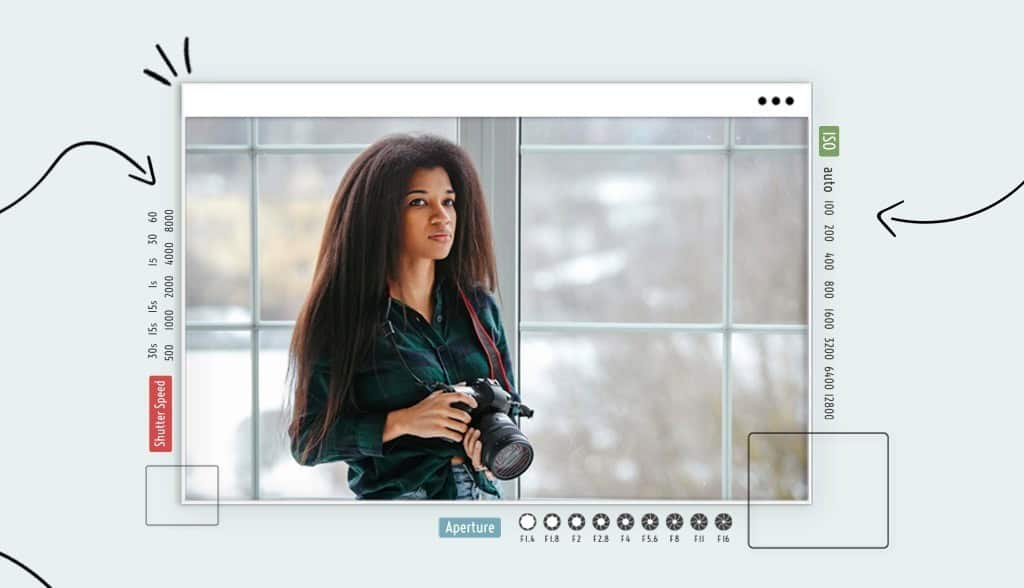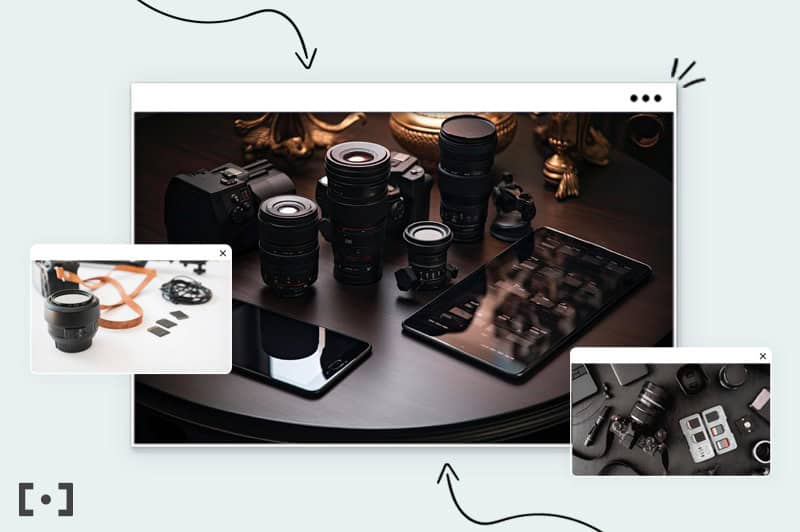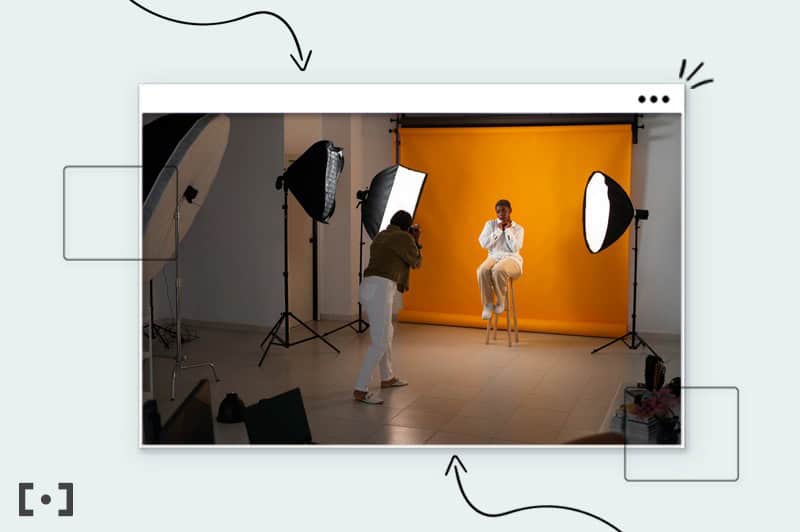
Point, shoot, filter, post. With today’s tech, everyone’s a photographer!
But it takes more to start a successful photography business than pointing an iPhone and beautifying an image.
Like the principal subject and elements in a perfect photograph, your passion for photography and business skills must balance. And when they do, like shooting in the golden hour, magic can happen.
So, you bring the passion, and I’ll tell you the steps you must take to start a successful photography business.

Photography freezes time, creating memories that last forever. And for many of us, photographs are our most precious processions.
With affordable camera gear, studio equipment, and free social media marketing, there are many reasons now is the perfect time to open a photography business.
And they’re not all tech; there are plenty of lifestyle ones, too.
But to live a photographer’s life, you must break new ground personally and professionally, learn new skills, and follow specific steps for starting a new business.
The first is finding your niche.
A photography niche is a small segment of the overall marketplace, like wedding photography, product images, or portraits.
Most successful photographers specialize in one niche or an area of photography that combines several. This focus enables them to accumulate a portfolio that showcases their abilities and build a reputation and sustainable career.
Your niche also determines what you’ll earn. A wedding photographer can charge $2000-plus per gig, while a portrait photographer around $400-$600.
And it’ll affect your work/social life, as some niches are local and weekend orientated (weddings). In contrast, others allow you to roam the world (travel and nature), working flexible hours.
9 common photography niches to consider:
But to become the go-to photographer in any niche, you must provide extra value to your target audience, and that’s where your competitors can help you.
Niche in hand, focus on your competitors to see what they do, how they do it, and why it’s unique. Then look for what they’re missing so you can provide extra value to your ideal clients.
For example:
Your direct competitors provide a similar service to your target audience and engage them using identical marketing strategies, like a website, social media, and local business listings.
Here’s how you find them:
When you find your competitors, study their websites and social media platforms to see which services they offer, their marketing strategies, pricing, how they engage their audience, and why they’re successful.
Reading their recent reviews, you can see what’s unique about their work. Then use this information to design your service.

Most start-ups need significant time and money to compete, and any market worth entering is competitive. Photography is no exception!
To make a living, you must take advantage of every opportunity. A business plan makes you focus on every detail, ensuring they’re perfectly placed, enabling you to get the absolute most out of what’s available.
Award-winning panoramic landscape photographer Destin Sparks said-
“Photography is the art of making memories tangible.”
Your business plan is how you make your photography business tangible. It answers the who, what, where, and why by asking the following questions:
If you don’t know the answers to those questions, don’t worry. I explain everything in my one-page business plan post. Check it out after this one.
Starting any business takes money. Okay, no surprise there. But you must build your budget to know how much you’ll need.
Your budget helps you in 3 ways:
You build your budget by calculating your start-up and running costs. Start-up costs include the essentials, like:
Running costs are your outgoings and include fixed and variable. Fixed stay the same regardless of how much business you generate; variables go up and down relative to your output. And both depend on your business set-up, like renting a studio or working from home.
For photographers renting a commercial space, fixed and variable costs might be:
Fixed costs:
Variable:
Once you calculate your set-up, fixed, and variable costs, you’ll know what’s left to spend on photography equipment, so let’s look at your options:

Your niche determines your equipment; for example, a portrait or fashion photography studio requires lights, backgrounds, reflectors, cameras, and tripods.
In contrast, a wedding/nature photographer will need an ultra-high-quality camera and various lenses to capture their subject’s spontaneous movements.
Regardless of your niche, photographers need a powerful computer and photo editing software to process and send their images to clients.
Here’s an industry average of everything you might need to start your photography business, not including a studio/office:
But your budget says what you can afford, right?
What if $10,000 to $15,000 to start your photography business is beyond your budget? Simple buy used. You can find great deals on used camera equipment on sites like eBay or Craigslist.
Quick question, have you heard the saying, “All the gear but no idea?”
I’ll explain next:

Photography is like any art; mastering it takes time, dedication, experience, and skill.
You must learn to capture and create balance, pattern, rhythm, contrast, emphasis, unity, and movement. And understand the 3 variables of photography, light, subject, and composition.
And there’s the technical side, such as the various photography techniques, working with multiple cameras and lenses, and using software to edit and process your images.
The saying “All the gear but no idea” is crucial because even a Lecia S3 camera at $19,995 won’t make you a skilled photographer.
Pioneer of street photography Henri Cartier-Bresson put it this way –
“Your first 10,000 photographs are your worst.”
You must practice learning your craft and hone your skills; consider working with a professional photographer for free to gain from their experience. Or take one or more of the many free online photography courses available, like:
Every photography business needs a social media presence to show people what they do and engage their imagination.
Which you focus on depends on your goals, for example.
Facebook:
Facebook might not jump out as the go-to platform for photographers, but having a Facebook business page is great for building your online presence and connecting with groups relevant to your niche.
And while Facebook interactions aren’t as high as Instagram, those who follow you are likelier to want and book your services.
Also, Facebook advertisements enable you to target specific demographics, ensuring you get the most out of what you invest.
Instagram:
Instagram was the first to allow image sharing on phones and is now the world’s leading visual social media platform.
And with the ability to sell products from the app and link to your website makes it a popular platform for photographers. You can also use Instagram for inspiration by following the best Instagram photographers.
Tumblr:
Tumbler lets users re-blog your content with a single click, increasing the eyes on your work, making it an excellent platform to create and show your portfolio.
Pinterest:
Pinterest differs from other platforms, as it doesn’t matter how many likes you have.
The power of Pinterest is showcasing your photographs to your target audience through backlinks, leading users to your photography website.
Speaking of which!
While a social media presence is helpful, building your business website is essential.
With a website, you can connect all your other marketing strategies (like social media), making it easy for prospective clients to view your work and book a gig.
Also, a dedicated business domain name adds a professional flair to your brand and gives you an invaluable presence on Google.
6 best website options for photographers:
Keeping clients is easier than landing new ones. When you go above and beyond to provide value and solve their problems, they’ll keep coming back to you.
View every project you undertake as a stepping stone in your freelance journey, be patient and keep your eye on the end goal, focus on productivity, and always keep moving forward.
And remember, you’re starting your freelance business intending to stay in business, and when you build client relationships at every opportunity and are consistently professional, the results will come.
Making word-of-mouth marketing priceless, and it doesn’t cost you a dime.
When you start your photography business, focus on encouraging clients to refer you to others and encourage them to leave glowing reviews on your online platforms.
WOMM and referral strategies to use:
The last one might seem obvious, but research shows that while 83% of people say they’re happy to refer a business to friends after a positive experience, only 29% do!
Source-Advisor Impact.
The takeaway:
Even when clients love your brand and service, you must encourage reviews and referrals by making it worth their while.

Most new photographers have the same problem: how to land their first gig without a portfolio!
Fortunately, there’s a way around it. You just need creative strategies.
Shoot for free:
For photographers without a comprehensive portfolio, contact friends, family, neighbors, workmates, and group members and offer free photo shoots. In return, you get free models, build your experience, and create a portfolio to market to future paying clients.
Display your work:
Enter every local art show in your state and get your images, name, and contact details front and center so prospective clients see your skills.
Partner with other businesses:
Contact local event planners, show them your recent images via your online presence, and offer your service at a competitive price.
Work as a professional photographer’s assistant:
Ask in local camera shops and find someone who works in your niche. Sure, you’re giving your time away, but the experience could be priceless.
More tips on getting your first gig:

A photographer’s ability to market themselves often determines their success. Your first goal is to ensure your branding suits your target audience and is where they’ll look for it.
To do both, check your competitor’s websites and social media channels. Note which platforms they use, their colors, fonts, content and style, logos, and layout designs.
For example, wedding websites often use soft pastel colors and romantic fonts like script and calligraphy. In contrast, travel/adventure websites use bold primary colors and strong fonts like Amsterdam Travel or wanderlust.
Don’t copy; take ideas, then put your DNA on them.
Then use similar marketing strategies to attract your first customers because odds are, if your competitors are successful, so is their marketing.
Like any freelance gig, making money at first can be challenging. Hey, I know; I’m a freelance writer.
But you can earn while practicing your craft, improving your skills, and building your portfolio using the following sales strategies.
Sell or license your photos on stock websites:
Sock websites like iStock and ShutterStock allow you to upload your images, which they sell to marketing agencies and other media businesses. In return, you get a commission every time someone downloads your work.
You can also create a Flickr account and license your photographs through Getty Images.
Join photo contests:
Most photo contests offer cash prizes and are a great way to boost public awareness of your new photography business.
And as many are free to enter, you’ve nothing to lose and everything to gain.
Loads of photo contests are available, such as:
Sell your prints:
You can create an income by reproducing your most captivating images and selling them as prints.
Here are some ways to do it:
Pro-tip:
Before you sell your prints, source a printing service to ensure the quality is perfect every time. And that, my friends, is a wrap.
Most posts tell us the industry average to start a photography business is between $10,000 and $15,000.
But you could start a photography business for far less if you buy used photography gear, build your brand online, and use free social media.
While each photography niche has its pay rates, other factors play a part in determining which is most profitable.
For instance, your location, experience, and reputation determine what people will pay you.
That said, here are the industry average pay rates:
Like any freelance gig, making money at first can be challenging. Hey, I know; I’m a freelance writer.
But you can earn while practicing your craft, improving your skills, and building your portfolio using the following sales strategies.
Sell or license your photos on stock websites:
Sock websites like iStock, BigStock, and ShutterStock allow you to upload your images, which they sell to marketing agencies and other media businesses. In return, you get a commission every time someone downloads your work.
You can also create a Flickr account and license your photographs through Getty Images.
Join photo contests:
Most photo contests offer cash prizes and are a great way to boost public awareness of your new photography business.
And as many are free to enter, you’ve nothing to lose and everything to gain.
Loads of photo contests are available, such as:
Sell your prints:
You can create an income by reproducing your most captivating images and selling them as prints.
Here are some ways to do it:
Pro-tip:
Before you sell your prints, source a printing service to ensure the quality is perfect every time. And that, my friends, is a wrap.
Conclusion
Photographers are visionaries; from the family portrait above a mantelpiece to Trảng Bàng`s Pulitzer prize-winning image “The terror of war,” you all bring value to society.
When you start a photography business, you provide that value.
You can also work to your schedule in areas of photography that interest you and locations that inspire you.
But it takes passion and dedication to reap the rewards. Keep your focus and never give up because, just like a photograph, it’ll last forever when you start a successful photography business.
This portion of our website is for informational or educational purposes only. Tailor Brands is not a law firm, and the information on this website does not constitute legal advice. All statements, opinions, recommendations, and conclusions are solely the expression of the author and provided on an as-is basis. Accordingly, Tailor Brands is not responsible for the information and/or its accuracy or completeness. It also does not indicate any affiliation between Tailor Brands and any other brands, services or logos on this page.
Products
Resources
©2025 Copyright Tailor Brands